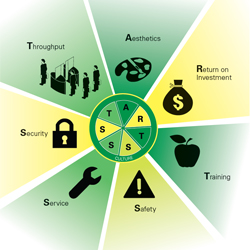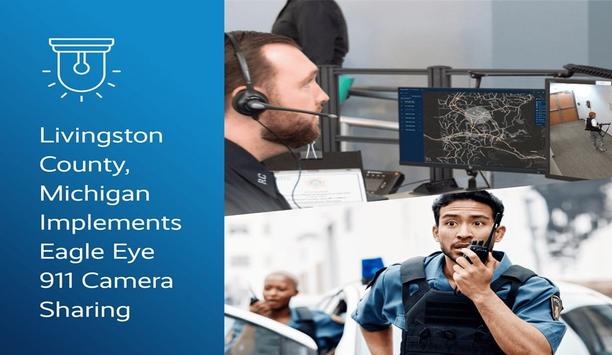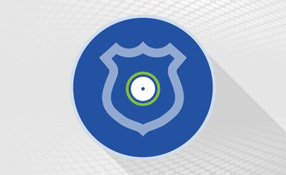 |
| All seven decision factors contribute to an effective physical security solution |
Installation of an effective physical security solution can enable end users to avoid serious mistakes. This article presents a comprehensive and consultative decision methodology to help end users make the best decisions about security entrance products for the long term. The decision-making process is based on Boon Edam’s more than 100 years of experience in installing thousands of entry solutions and talking to end users worldwide.
Seven key decision factors
The entrance solution decision-making process can be divided into two parts. During the before installation phase, initial purchase decisions are often weighted towards the factors Security, Aesthetics and ROI. After installation, however, and once there is no going back, Throughput, Training, Service and Safety play a more prominent role.
By understanding the importance of each of the decision factors and considering all of them in the context of the final product decision, end users stand a much better chance of having the best overall decision-making experience that meets all their needs.
While initially Aesthetics or Security often naturally jump out as paramount in the decision process, all seven decision factors contribute to an effective physical security solution. Let’s take each factor and walk through a more comprehensive decision-making process. A process that is more internally focused, as opposed to one driven by a contractor talking solely about price or an architect more interested in entries that meet superior aesthetic qualities.
1. Security features
Security is typically the top driver in the buying decision, but do compare security features closely to ensure you obtain the right solution for your needs.
Does the proposed entry solution offer these security features?
- Tailgating/piggybacking prevention
- Anti-climb-over detection (waist high entrance) or prevention (full height barrier)
- Support for anti-passback feature in the access control system
- Integration with any access control system
- Minimal false rejection rates (3% or less)
The decision-making methodology process is based on Boon Edam’s more than 100 years of experience in installing thousands of entry solutions
Are you familiar with false rejection and the impact on the overall acceptance of daily users of the entry solution? If authorised users are rejected by a security entrance too frequently this can lead to complaints across the organisation. So, it is important you get data on false rejection rates.
2. Throughput requirements
Throughput affects users directly on a daily basis. Before you commit to a particular kind of entrance solution, carefully calculate the peak throughput requirements for your building and entrances:
- Are there shifts that create heavy flows of traffic at certain times of day or evening?
- Do you need one-way or two-way traffic at certain locations?
- Where will you provide access for the disabled or for large items?
- Does the security entrance allow for card stacking to maximise throughput?
- Does the security entrance use automatic or manual operation?
In measuring and evaluating throughput, it’s critical to manually count the number of people entering and leaving an entrance in a short period of time, such as five minutes, during a peak busy period. Do not rely on access control numbers especially if swing doors are present, as tailgating is likely to be occurring and your count could end up too low.
3. Aesthetic entrance solutionAesthetics are important initially, but they should not trump Security, Safety or Throughput. The winning solution should meet aesthetic requirements without sacrificing the other key decision factors. One’s entrance may be drop-dead gorgeous, but if you have a line of employees and guests stacking up at the entry doors, they won’t be marvelling at the aesthetic appeal for long.
Important aesthetic features should include:
- Architectural finishes
- Glazing options to complement any design/facade
- Workmanship and finishing
- Numerous top cover options for optical turnstiles
- Wide variety of product dimensions
Important: Do not let aesthetics be the driving decision factor. A factor? Certainly, but only one of seven that must all be considered.
4. Return on Investment (ROI)ROI involves far more than the initial cost of the product.
ROI factors to consider:
- Does the entry solution replace or reduce manned security ($114,000/year at $13/hour, for one guard, 24/7/365 coverage*
- Robust construction = Long product life
- Certified MTBF (mean time between failures) cycle data
- Energy savings
* US Bureau of Labour Statistics, 2011
The average life of a security entrance product is 10-15 years. By weighing all the above factors, you are able to more accurately consider the true cost of making the buying decision.
Training usually isn’t considered a major factor when choosing an entry product. However, since most manufacturers do not directly install their products, technical training becomes critical in creating successful service providers for end users. It adds considerable value during installation and in maintenance over the life of the product.
Ask potential entry solution providers:
- Are installation, service, planned maintenance, and post-installation technical training available for installers of the product?
- Do you provide a certification program for installers to keep them trained and up-to-date on new technologies?
- What training methods are used: Hands-on factory and field training, pre-scheduled monthly webinars or private custom webinars?
- What are the training costs and are they included in the overall solution or do they cost extra each time?
A comprehensive technical training and maintenance program from the manufacturer is critical to the long-term success of the installation and customer satisfaction.
6. Service offeringService considerations typically come last, or not at all, when making a buying decision. Yet, during and after installation the level of service directly impacts continued operations and ROI.
Security, Aesthetics, ROI, Throughput, Training, Service and Safety play a prominent role in selecting a security entrance solution |
Look for these features in a comprehensive service offering:
- Nationwide and global certified distribution partners
- Phone support: What is the percentage of same-day resolution?
- Parts: What is the percentage of same-day parts fulfilment? Are parts shipped from overseas?
- Is installation project management available?
- Preventative planned maintenance agreements
Consider the impact of a delayed installation, unsatisfactory technical support and delayed parts availability. Problems in any of these areas could drag on for days or weeks, meanwhile your building is vulnerable while entrances are shut down and nobody is happy. All because service was left out of the decision-making process.
7. Safety complianceSafety, too, is rarely discussed during the bidding process. However, it is the one factor that could quickly and tragically undermine the effectiveness and success of the project.
Does the provider offer these safety features?
- Code compliance
- Meets all NFPA fire egress codes
- Audible and visual communication for users
- Added sensors to protect users from moving components
- Speed/torque controls that can be adjusted to meet site operating conditions
- Instructional media to train new users
Ensure all above criteria are met as they apply for the physical security products and applications you are considering.
Company culture
In addition to the seven crucial decision factors discussed so far, there is one more factor to consider. Entry solution providers must understand your company Culture, and help you communicate the best way for your culture to adapt to a new security entrance. Some culture factors include:
- How much exposure have your employees had to security entrances (other buildings, around town, previous employers, etc.)?
- How do you think employees will feel about your new security entrance?
- How will you plan to achieve buy-in from employees?
- When and how will you communicate the upcoming changes in security entrances?
- Are there any special needs — service animals, pets, elderly or disabled users, frequent deliveries in large carts — to be considered?
- Are all stakeholders involved in the decision process including the facility manager who will own the entrances once installed? Has the CEO been in on the decision-making process, is it possible he or she might decide the newly secure entryway is far from the image they wish to project?
Security entrance project – outcome
The success (or failure) of a security entrance project must start and end with a comprehensive, consultative process that takes into consideration the full range of factors for discussion and ultimate decision. The decision-making methodology outlined here is such a process. One that will help ensure that the buyer will be just as satisfied, and probably more so, years after installation and not just when you’ve cut the ribbon on day one.























